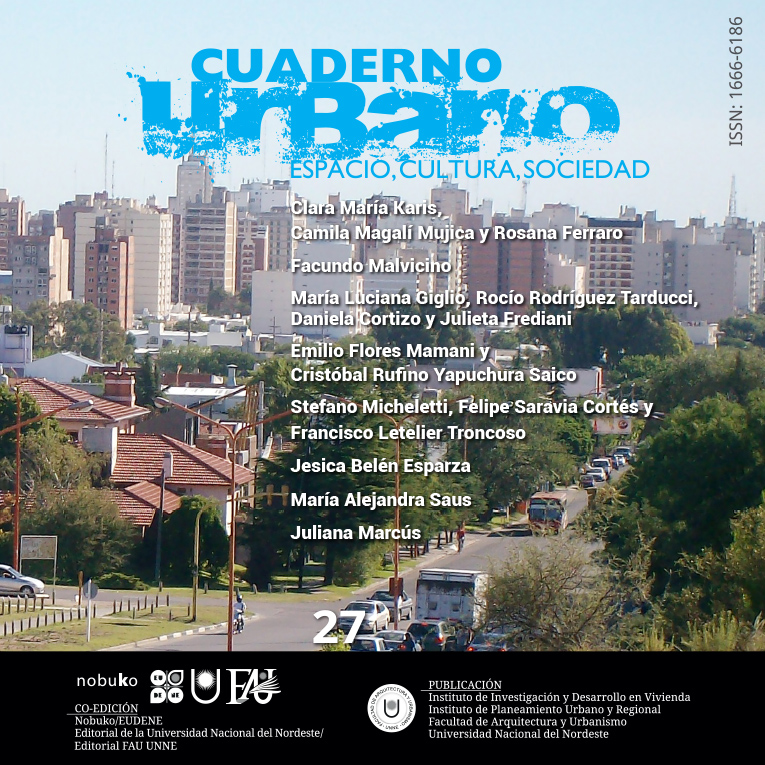City product management as an element of ecological marketing in the perception of foreign visitors to Puno
DOI:
https://doi.org/10.30972/crn.27274120Keywords:
Green marketing, city marketing, marketing managementAbstract
The article deals with the perception of the city product as an element of ecological marketing by foreign visitors. The objective of the study was the determination of the perception of foreign visitors about the management of the Puno city product. The methodology used consisted of the quantitative, descriptive and explanatory method, and with the help of the Likert scale technique the field data were collected. The results find that the management of the elements of the city product only influences 28.4% in the perception, the rest being other factors. It is concluded that the management of the elements of the city product, such as green areas, transport system, sounds and visuals, as well as solid waste does not significantly influence the perception of foreign visitors.
Downloads
References
(1) Abbagnano, Nicola (1986). Diccionario de filosofía (2da.). México: Fondo de Cultura Económica.
(2) André, Francisco & Cerdá, Emilio (2006). Gestión de residuos sólidos urbanos: análisis económico y políticas públicas. En Cuadernos Económicos de ICE No 71, (71), 71-91. Disponible en https://dialnet.unirioja.es/servlet/articulo?codigo=2249708
(3) Calomarde, José (2000). Marketing ecológico. Madrid: Pirámide.
(4) Couto, Ismael & Hernández, Alberto (2012). Participación y rendimiento de la iniciativa privada en la gestión integral de los residuos sólidos urbanos en la frontera México-Estados Unidos. En (5) Gestión y Política Pública, 21(1), 215–261. Retrieved from http://www.scielo.org.mx/pdf/gpp/v21n1/v21n1a7.pdf
(6) Couto, Mara (2007). Contaminación visual del paisaje, cartelería publicitaria en rutas. Efectos en la población. Metodología de la Investigación. Maestría en Paisajismo-Instituto Universitario Bios. Costa Rica.
(7) Epa-Nsw (1994). Who cares about the environment?: A Benchmark Survey of the environmental know ledge, skills, attitudes and behaviour of the people of New South Wales 1994 / prepared for the Environment Protection Authority, New South Wales, prepared by Keys Young. disponible en: https://www.environment.nsw.gov.au/-/media/OEH/Corporate-Site/Documents/Research/evaluation-of-who-cares-about-the-environment-1994-2012-summary-report.pdf?la=en&hash=D98B4301A6CD8BDAABBEC35601357E37384CC02C
(8) Flores, Emilio & Yapuchura, Angélica (2012). Marketing de relaciones como una estrategia de diferenciación en la fidelización del cliente en las entidades financieras localizadas en Puno. En COMUNI@CCIÓN: Revista de Investigación En Comunicación y Desarrollo, 3(1), 5-16. Disponible en:https://www.comunicacionunap.com/index.php/rev/article/view/14
(9) Fuentes, Valeria & Mejía, Anita (2015). Indicadores de contaminación visual y sus efectos en la población. En Enfoque UTE, 3 (3), 115-132. Disponible en:http://ingenieria.ute.edu.ec/enfoqueute/
(10) Guía de calles y datos (S/F). Guía de Calles y Datos. Disponible en: http://www.guiacalles.com/calles/newcallesv.asp?ID=1121&city=puno
(11) Hess, Alina (2006). Contaminación Visual. Indicadores de Vallas. En Comunicaciones Científicas y Tecnológicas, 1 (4). Disponible en: http://www.unne.edu.ar/unnevieja/Web/cyt/cyt2006/07-Tecnologicas/2006-T-024.pdf
(12) Maldonado, Juan (2019). Ciudades y contaminación ambiental. En Revista de Ingeniería, (30) 66-71. Disponible en: http://www.redalyc.org/articulo.oa?id=121015710002
(13) Melgarejo, Luz (1994). Sobre el concepto de percepción. Alteridades, 4(8), 47-53. Disponible en: https://doi.org/10.4067/S0718-22952008000100003
(14) Mendez, Carmen (2013). La contaminación visual de espacios públicos en Venezuela. En Gestión y Ambiente, 16(1), 45-60. Disponible en: http://www.redalyc.org/articulo.oa?id=169427489007
(15) Ministerio de Comercio Exterior y Turismo (2018). Serie histórica de arribos de turistas nacionales y extranjeros por meses según años de la región puno 2008 al 2017. Puno.
(16) Ossa, María & Pantoja, María (2012). Análisis y propuesta de imagen de la ciudad de Temuco, Chile. Universidad de Chile.
(17) Peattie, Ken (2001). Towards Sustainability: The Third Age of Green Marketing. En The Marketing Review, 2, 129-146. Disponible en: https://doi.org/10.1362/1469347012569869
(18) Pinheiro, Clodualdo (2005). Curitiba Una Experiencia Continua. En Soluciones De Transporte. The European Journal of Planning. Disponible en: https://docplayer.es/45754444-Curitiba-una-experiencia-continua-en-soluciones-de-transporte.html
(19) Polonsky, Michael (1994). An Introduction To Green Marketing. En: Electric Green Journal, 1(2), 216-911. Disponible en: https://escholarship.org/uc/item/49n325b7
(20) Rentería, Javier & Velazco, Abel (2005). “Morfología de la ciudad y movilidad intraurbana: Guadalajara al borde de la parálisis”. En Scripta Nova, 9(194).
(21) Sanchez, Javier (2014). Contextualización y enfoques en el estudio de comportamientos proambientales o ecológicos con miras a la perfilación del consumidor verde. En Suma de Negocios, 5(10), 34-39. https://doi.org/10.1016/S2215-910X(14)70007-2
(22) Santos, Eulogio (2007). Contaminación sonora por ruido vehicular en la avenida Javier Prado. En Industrial Data, 10(1), 11-15. Disponible en: https://doi.org/10.15381/idata.v10i1.6201
(23) Sorensen, Mark; Barzetti, Valerie; Keipi, Kari & Williams, John (1998). Manejo de las áreas verdes urbanas. Washington, (109), 1-56.
(24) Tchobanoglous, George; Theisen, Hilary & Vigil, Samuel (1994). Gestión Integral de residuos Sólidos. España: Mc-Graw Hill.
Downloads
Published
Issue
Section
License
CUADERNO URBANO sustains its commitment to the Open Access policies for scientific information, on account of the fact that both scientific publications and public funded research must circulate freely on the Internet and without restrictions.
CUADERNO URBANO ratifies the Open Access model in which the contents of scientific publications are available in full text free of charge on the Internet, without temporary embargoes, and whose editorial production costs are not transferred to the authors. This policy proposes breaking down the economic barriers that generate inequities both in access to information and in the publication of research results.





.jpg)








